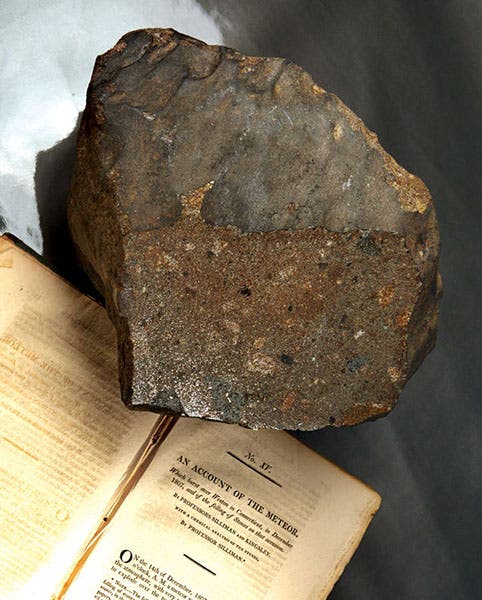Scientist of the Day - Charles Wheat
Charles Wheat, an American physicist, chemist, and civil engineer, was born Apr. 1, 1761. Wheat built several masonry bridges in central Connecticut beginning about 1790, but he had problems obtaining quality Portland cement, and the joints of his bridges started to deteriorate. Then he discovered a kind of stone in his native Farmington that was rich in iron, and it occurred to Wheat, who had studied physics at Princeton, that perhaps he could use electrical forces to hold the stones together. In 1806, he erected a bridge over the Farmington River that was made of stones that were charged alternately negative or positive and hence were strongly attracted to one another (first image). The Wheatstone bridge, as it was called, was built completely without mortar, and it was a great success (although horses pulling vehicles with iron axles found the going surprisingly sluggish when crossing). And then, after a problem-free year of operation, everything changed, in one split second. On Dec. 14, 1807, the Wheatstone Bridge was struck by lightning. The polarity of all the stones was instantly changed to negative, each stone felt an immediate repulsive force to every other stone, and the bridge exploded catastrophically. Several of the stones landed on Wheat's home nearby, and poor Charles was simultaneously crushed to death and electrocuted.
One large stone came down in Weston, Connecticut, some miles to the south, and it was immediately hailed by the locals as a meteorite from space. It was examined by Benjamin Silliman, the Yale professor of geology, and taken back to New Haven, where it became the centerpiece of their new meteorite collection. The Weston meteorite is still on display at Yale's Peabody Museum (second image), and they still think it is a meteorite, but what can you expect from a bunch of Whiffenpoofs.
The Farmington River Bridge was rebuilt, this time out of cast iron, and as Wheat's name was omitted from the replacement span, he is practically forgotten today, except in Farmington, where his house has been preserved as an odd but distinctive historical site (third image).
Wheat’s name survives only as a varietal beer popular in the Midwest, which many think is named after the grain, but which in fact is produced by a filter-free ionic separation process that Wheat invented and patented while pursuing his electrical investigations. How the process found its way from Farmington to Kansas City is a mystery, like much of Wheat’s life.
If you found this account intriguing, you should certainly check out the Wikipedia article on the Wheatstone bridge.
Dr. William B. Ashworth, Jr., Consultant for the History of Science, Linda Hall Library and Associate Professor, Department of History, University of Missouri-Kansas City. Comments or corrections are welcome; please direct to ashworthw@umkc.edu.









